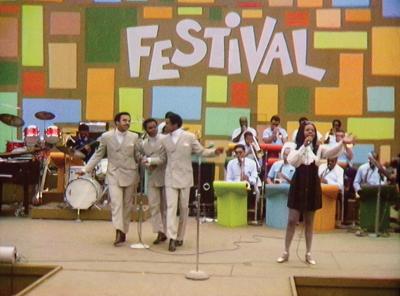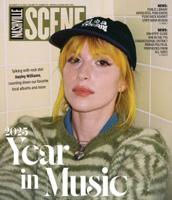When it comes to memorable concerts in 1969, it always comes down to Woodstock and Altamont.
It’s always all about either that weekend-long, New York-based peace-and-love fest where nearly half a million people got naked and partied in the mud, or that day-long bummer over on the West Coast, where The Rolling Stones tried to throw a free show but got upstaged by Hells Angels bikers (aka the event “security guards”) beating people with pool sticks and ultimately killing a Black guy.
But no one seems to talk about the Harlem Cultural Festival, a series of free concerts that took place in Harlem’s Mount Morris Park during the summer of 1969. Hundreds of thousands of people attended. No one died. No one had to be pulled out of there via helicopter. Hell, the Black Panthers were the security — and everything was still copacetic. Yet for many readers, this is likely the first time you’ve heard about this event.
Thankfully, Ahmir “Questlove” Thompson — drummer for hip-hop ensemble and The Tonight Show Starring Jimmy Fallon house band The Roots — is here to educate you with his new documentary Summer of Soul (... Or, When the Revolution Could Not Be Televised), which is coming to both the Belcourt and Hulu this weekend.
The film landed both the Grand Jury Prize and the Audience Award at this year’s Sundance Film Festival, and it’s easy to see why it won over viewers. Culling from 40 hours of footage, Thompson rounded up exuberant performances from such legends as Stevie Wonder, Sly and the Family Stone (who memorably played Woodstock), Gladys Knight and the Pips, The 5th Dimension and B.B. King, just to name a few. Thompson also includes interviews with some of the performers as well as some of the audience members who were in attendance, with several of them getting misty-eyed when they catch footage of the event and the joy and excitement going on. Organized by the flamboyant mover-and-shaker Tony Lawrence (dude was constantly putting on extravagant outfits all through the fest), the festival served as a place for Black people to enjoy themselves after a decade of working hard to make themselves heard.
Throughout the film, Thompson splices archival news footage and interviews amid the performances, turning every performance into a mini Black history lesson set to music. (It’s almost as if Thompson found a way to teach critical race theory that won’t piss off white folk.) But even with Thompson hipping his audience to everything from the origins of gospel music to how Black people really felt about the Apollo 11 moon landing, it’s still about the surprisingly sharp, clean performances. It’s hard to believe that a lot of this footage has been wasting away in a basement somewhere for half a century. Producer Hal Tulchin spent years trying to package the whole thing as a “Black Woodstock” show, but no one bit. (According to a 2007 article by Smithsonian magazine, local New York affiliates did air hour-long specials on Saturday nights during the summer the festival took place.)
Considering what Thompson — who has admitted that until recently he didn’t know much about this fest — pulls out of the footage, it’s damn near unsettling how no one bothered to jump on this until now. (I’m so not looking forward to those pedantic, Black-music know-it-alls who’ll be claiming they knew all about the festival and we’re all just late to the party.) I mean, here is a festival where you have gospel great Mahalia Jackson getting a young Mavis Staples (then a part of The Staple Singers) to join her in singing “Take My Hand, Precious Lord.” You have Sly and the Family Stone, who — even though they got onstage late as usual — managed to get the crowd jumping with tunes like “I Want to Take You Higher.” You have ousted Temptations frontman David Ruffin performing “My Girl” all by his damn self and still killing it. You have Ray Barretto and Mongo Santamaría winning over the crowd with their Afro-Cuban jazz grooves. And you have Nina Simone, looking like a Nubian princess and urging Black people to rise up during her set. You also have comedians Moms Mabley and Willie Tyler and Lester. (I had no idea Tyler was balding in the ’60s and has worn a wig in the years since.)
The Harlem Cultural Festival may not have had the reckless abandon of Woodstock or the reckless endangerment of Altamont. But as Summer of Soul shows, it was still a joyous moment in time when African-Americans — young and old — felt Black, proud and free. No wonder the networks didn’t want that shit shown.





